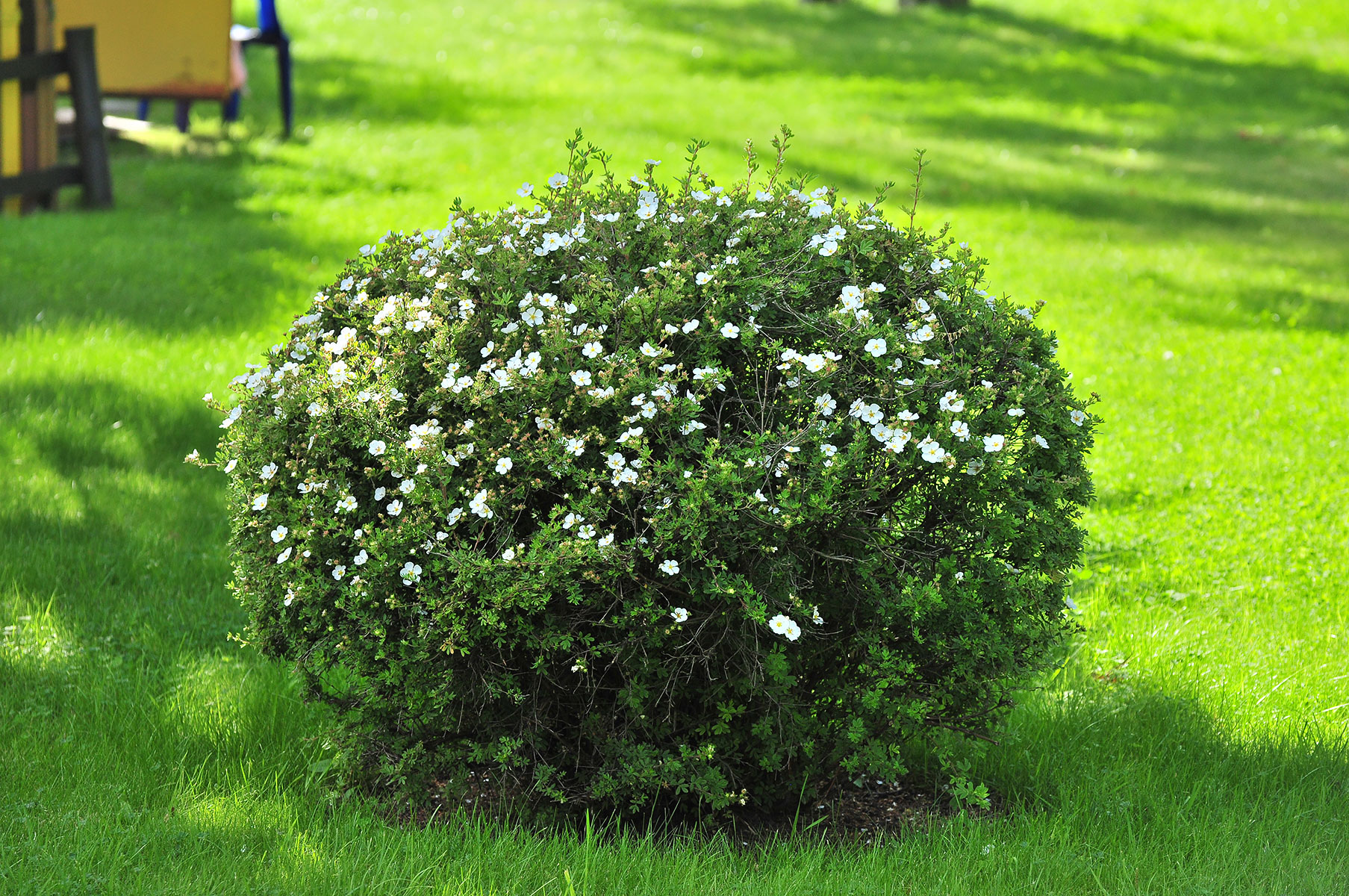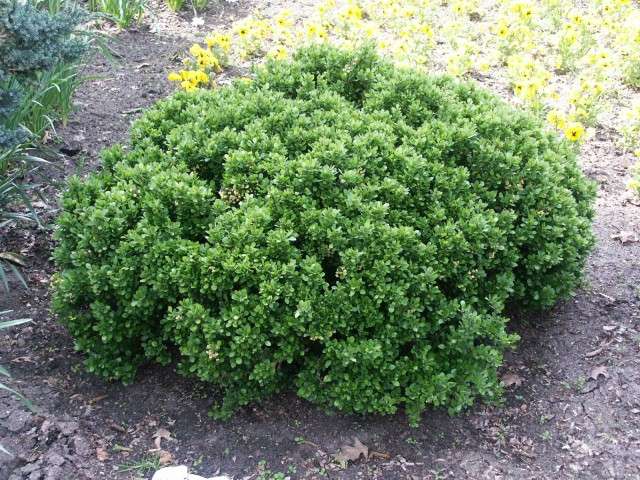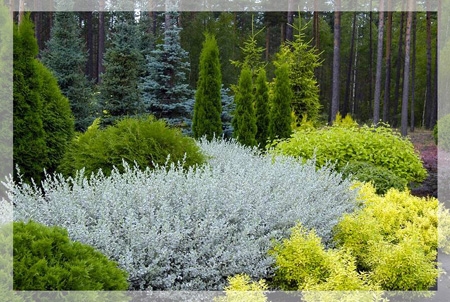Perennial garden shrubs blooming all summer. About the world of plants and country life

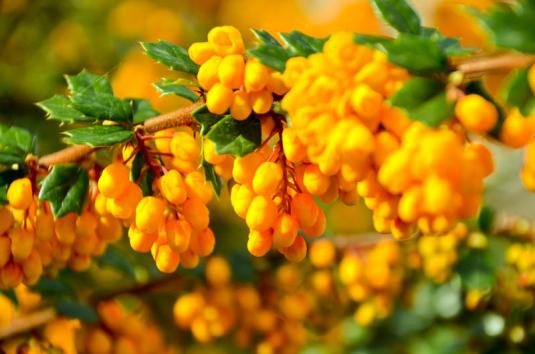

For low borders, you can use a low and dense variety. boxwood(Buxus sempervirens Suffruticosa) is a slow growing evergreen shrub with very beautiful glossy dark green leaves.
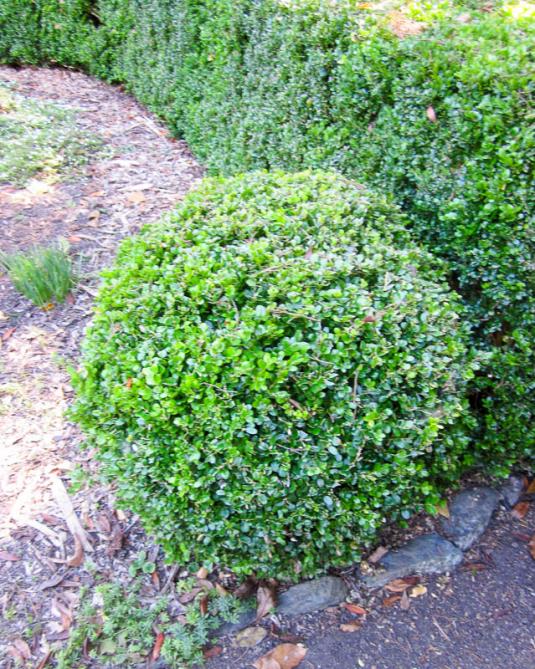

Boxwood is perfect not only for decorating an oriental-style balcony, but also for front trimmed borders. Several varieties of boxwood have been bred, which differ not only in the shape of the leaf, but also in the variegated color of the leaves.
Boxwood is shade-tolerant and drought-resistant, prefers fertile loose soils without stagnant water. For the winter, it is advisable to cover boxwood with agrospan to protect the leaves from winter and early spring sunburn.
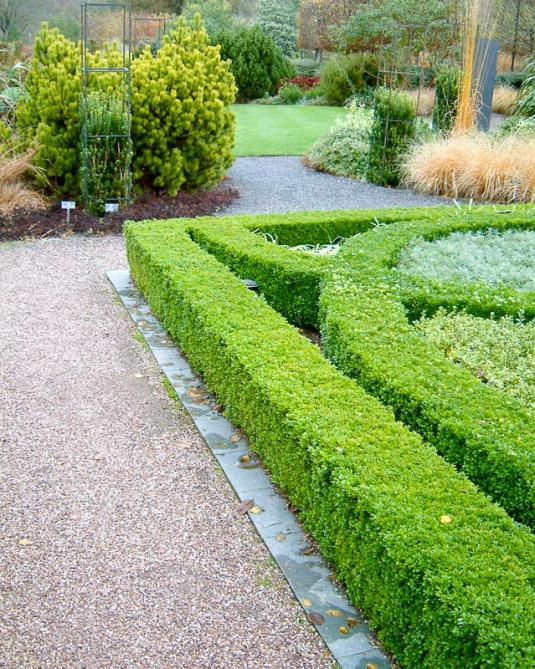
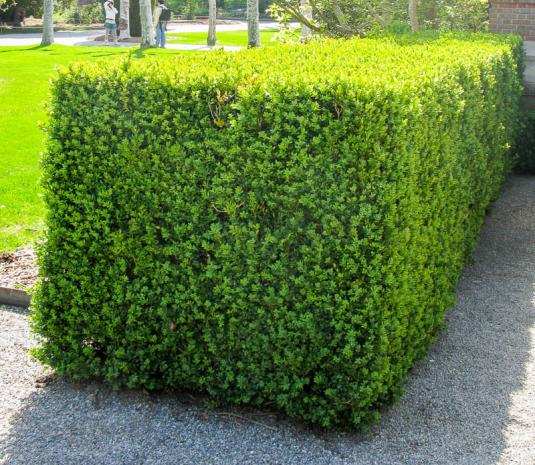
For border plantings, it is quite possible to use some varieties. Fortune's euonymus(Euonymus fortunei) - slow-growing, very low, creeping shrub up to half a meter high with long shoots up to 3 meters, easily rooted in the internodes. These shoots are quite capable of clinging to a support, if any. Fortune's euonymus has green small leathery leaves 2-5 centimeters long.
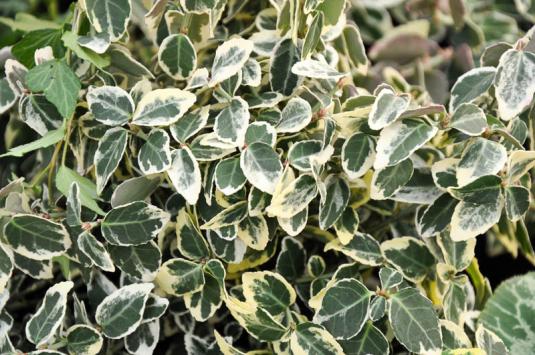
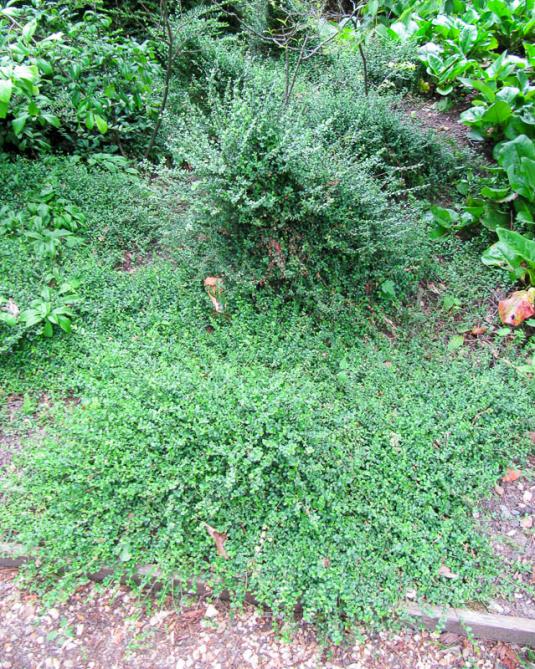
This species, as well as its hybrid forms, such as Fortune's variegated spindle tree (Euonymus fortunei Variegatus) with white-green leaves and pink veins, which can also be used as a ground cover. And ripening fruits will not only add decorativeness to the bushes, but also serve as food for birds.
Fortune's euonymus prefers a half-body, is quite drought-resistant, tolerates pruning well.
![]()
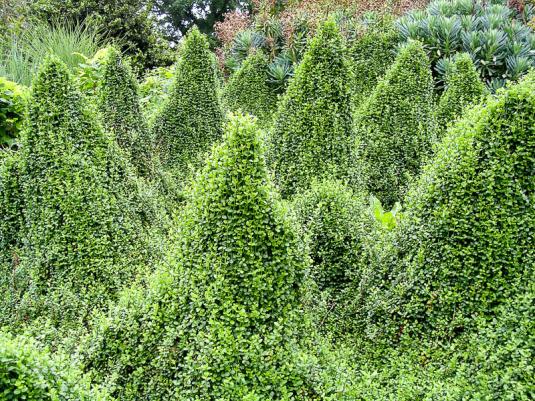
Karagan(Caragana) has long been used as ornamental plant. Perhaps most of us know it as an acacia growing in forest belts and parks, but in fact it is a caragana. For example, types such as prickly caragana(Caragana pygmaea) and caragana orange(Caragana aurantiaca) are able to create even impenetrable thickets if they are not cut.

Orange Karagana is a loose shrub up to 1 meter tall with numerous protruding shoots.
It grows well in urban conditions, tolerates drought well, and is completely undemanding to soil fertility. It needs to be trimmed constantly to get a solid green border. Karagana prickly differs from orange only in yellow flowers.
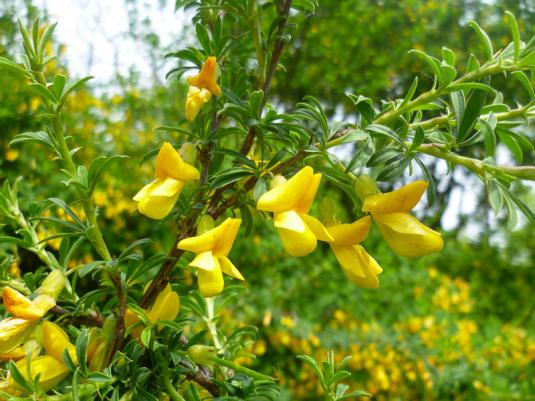

Very beautiful in a hedge snowberry(Symphoricarpos). Snowberry is a deciduous shrub up to 1-1.5 meters tall, especially beautiful in autumn, during long-term fruiting, when the branches bend under the weight of numerous white berries, indeed resembling small snowdrifts. And, perhaps, it is called so because the berries on the bush hold for a long time, right up to the snow.

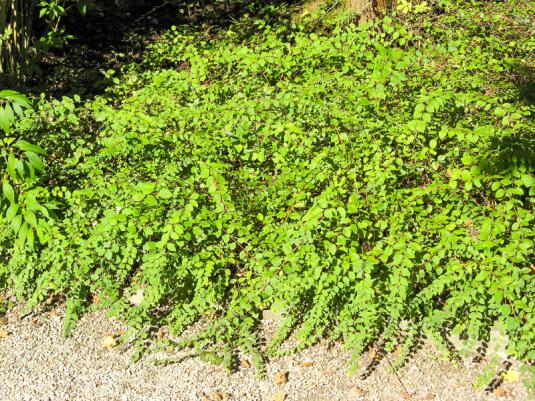
The snowberry grows very quickly, is completely unpretentious in care, prefers open sunny places, calcareous soils. It grows well in urban conditions with insufficient watering. It tolerates shearing and bush formation. Sometimes in severe snowless winters it can freeze slightly, but it recovers very quickly.
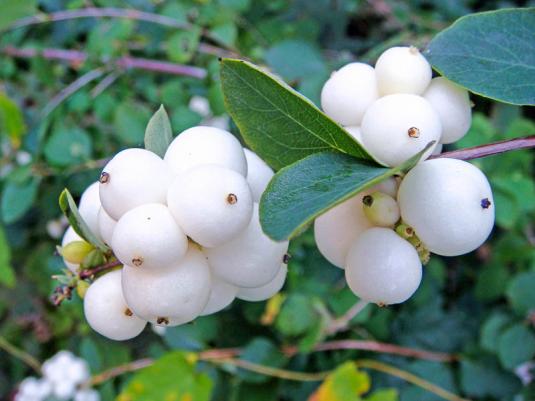
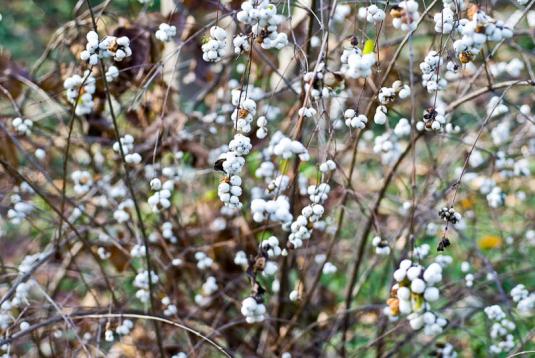
For a low hedge, you can use semi-evergreen honeysuckle glossy, or brilliant(Lonicera nitida) with many lodging shoots, abundantly dotted with shiny green oblong leaves.
Brilliant honeysuckle grows well on both sandy and clay soils, if measures are taken to improve fertility, make the earth water and breathable. It grows well in open, sunny places, and in partial shade. The brilliant honeysuckle is thermophilic, therefore in our climate it loses leaves for the winter and can freeze slightly, therefore it requires shelter for the winter.

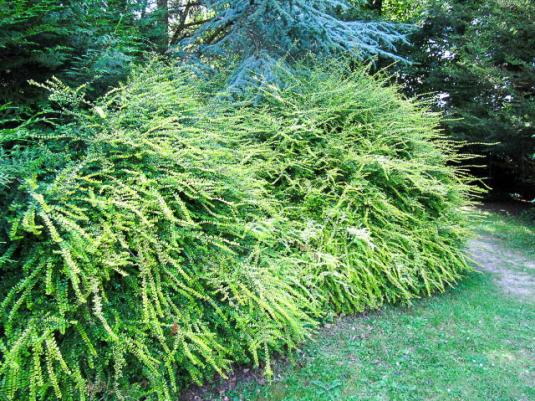
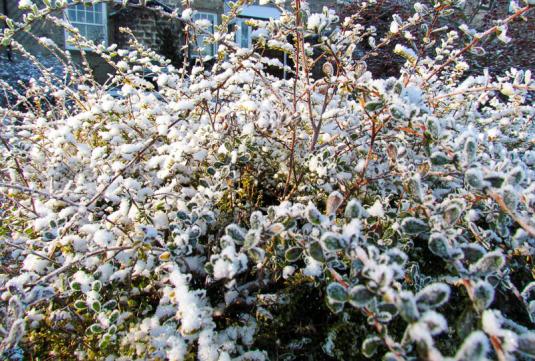
and honeysuckle(Lonicera pileata), which differs from the first in fragrant pale yellow flowers. It bears fruit, the fruits are medium-sized, with a cherry, purple. Honeysuckle cap-shaped can grow both in the sun and in partial shade; besides, it is more hardy than glossy honeysuckle, but in cold winters it still loses leaves.

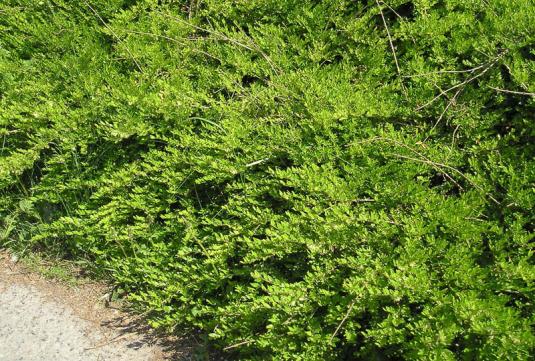
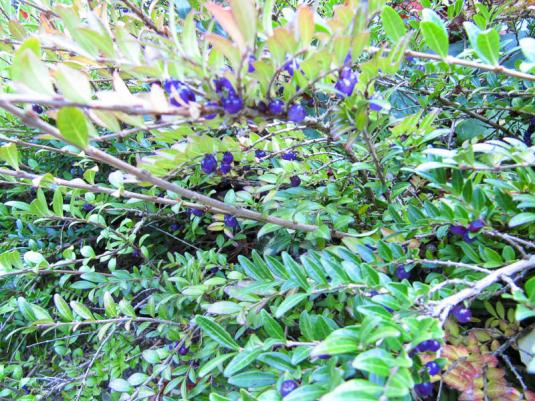
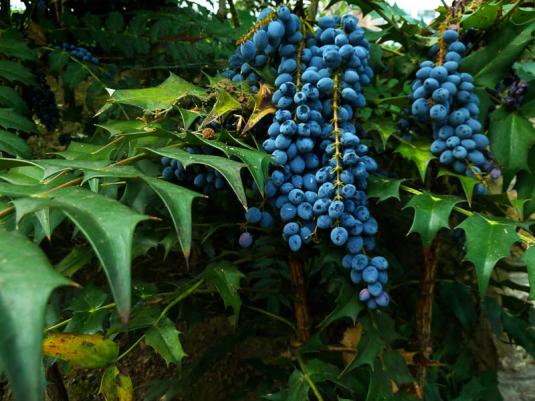
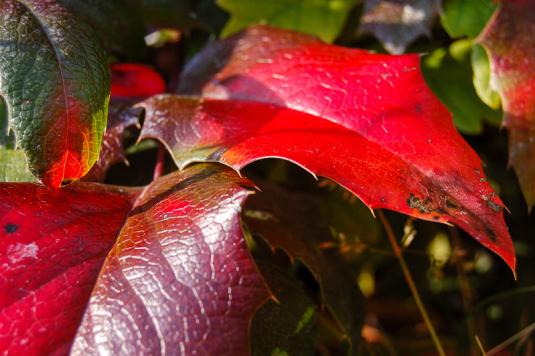
Almond low, or steppe almond(Amygdalis nana = Amygdalis tenella = Prunus tenella) - low, up to 1-1.5 meters tall, branched deciduous shrub, especially beautiful in early spring, when it blooms with very bright, attention-grabbing, pink flowers that bloom along with the leaves. Almond is unpretentious, so it can be successfully used to create permanent garden compositions, flower beds.
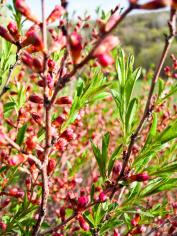


Almond low prefers sunny places, tolerates drought, can grow on poor sandy soils. On clay soils, almonds will have to be drained, as they do not tolerate stagnant water in the soil at all.
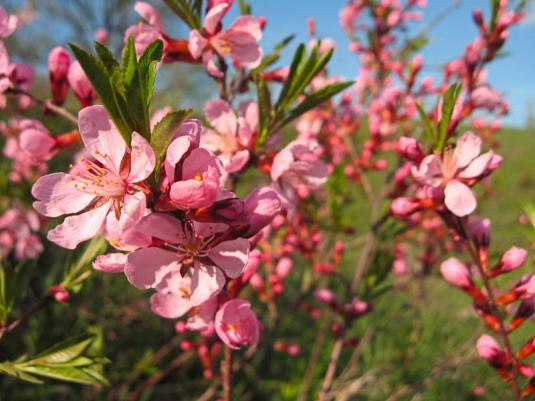

Suitable for low curbs Cotoneaster Dummer(Cotoneaster dammeri), cotoneaster pressed(Cotoneaster adpressus), cotoneaster horizontal(Cotoneaster horizontalis). Cotoneaster Dummer - ground cover evergreen shrub with long, easily rooted shoots and small, only up to 4 centimeters, oval leaves. In autumn, ripening red fruits add decorativeness to the cotoneaster.
Cotoneaster appressed refers to deciduous ground cover plants. It has small, up to 1.5 centimeters, rounded leaves. Red fruits also ripen in September.

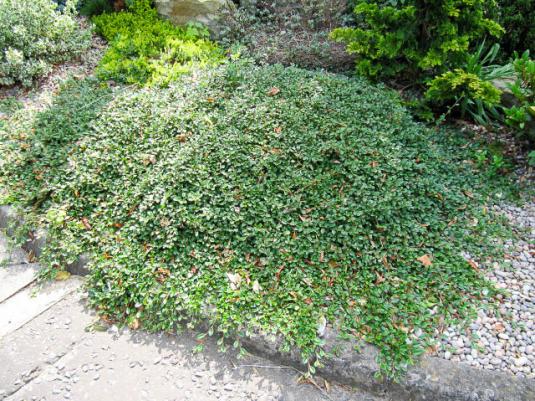
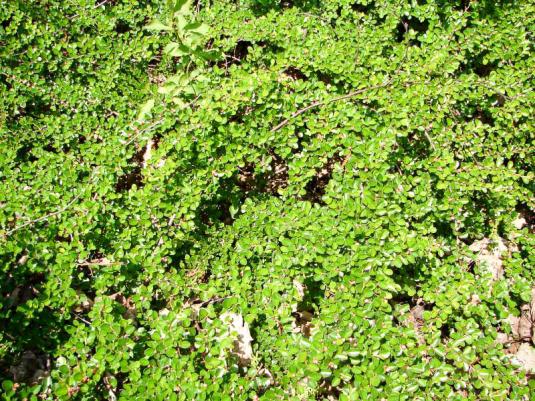
Cotoneasters are undemanding to soil fertility, can grow both in an open sunny place and in partial shade, do not tolerate strong waterlogging, but are very responsive to watering in dry times. For the winter, these types of cotoneaster need to be covered, as they freeze slightly.
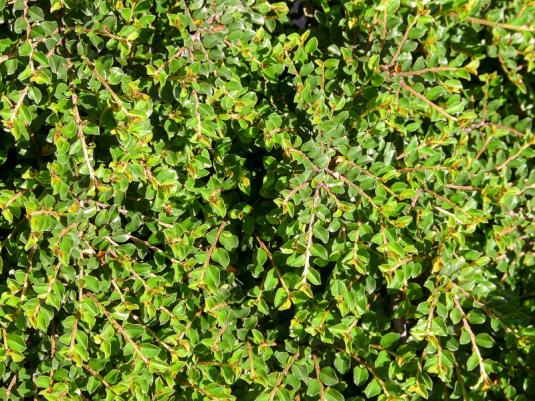
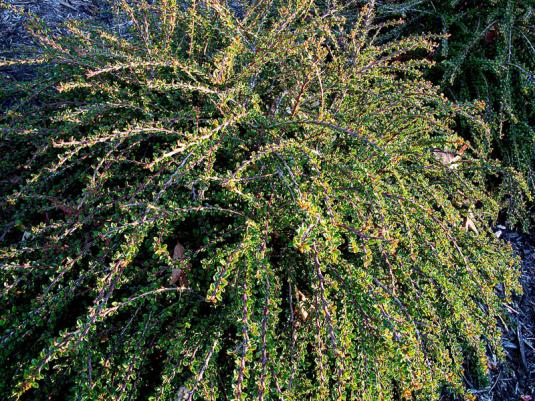
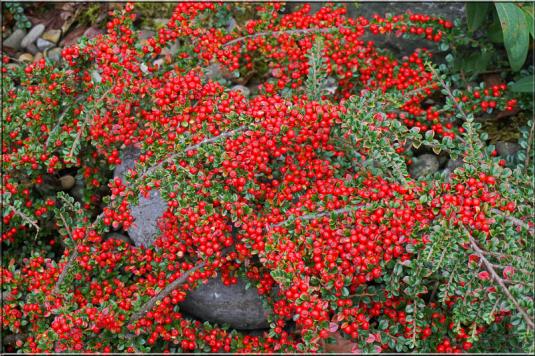
Very decorative cinquefoil. Good for low hedges Potentilla Dahurian(Potentella davutica) and cinquefoil shrub(Potentella fruticosa).
Potentilla Dahurian is a low deciduous shrub up to 1 meter tall, blooms all summer with white flowers. Potentilla shrub - neat shrubs of a rounded shape, but slightly higher than the Daurian Potentilla, blooms with yellow flowers, there are varietal forms with white, pink and red flowers. Potentillas are unpretentious in care, they grow well in an open sunny area with minimal watering and top dressing. They tolerate a haircut well, do not require shelter for the winter.
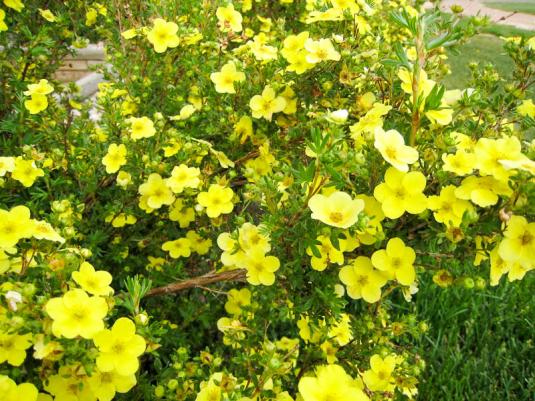
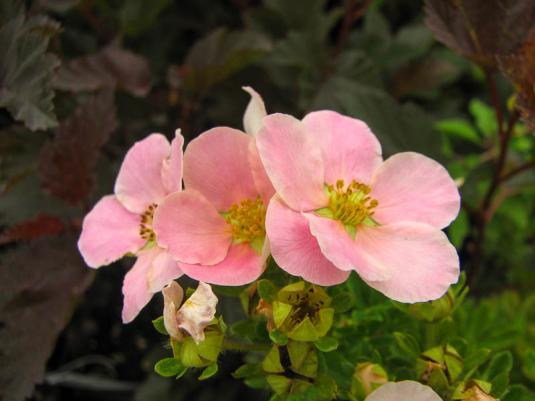

For dry areas with depleted soil for hedges, you can use a steppe plant such as gorse dyeing(Genista tinctoria) - a dense shrub up to 1 meter tall with thin shoots directed upwards. The shoots are covered with narrow pale green leaves. Blooms with bright yellow flowers. The shrub is very unpretentious, although it can freeze slightly in snowless winters, but it quickly recovers.
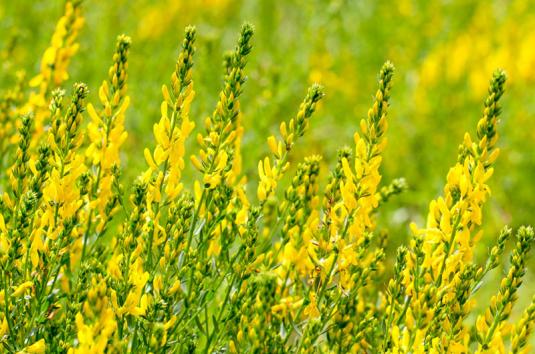
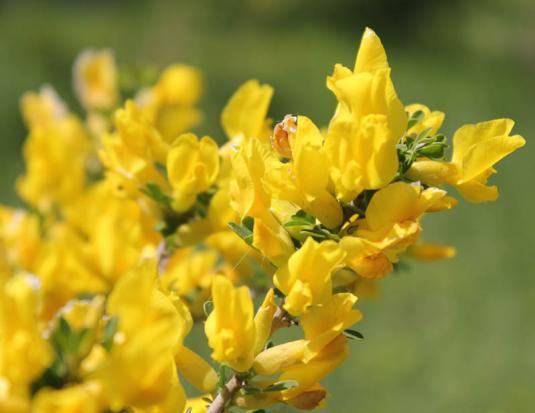
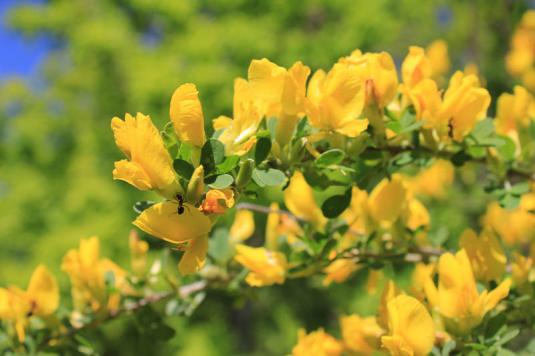
Rose(Rose) - in no way inferior in beauty to rhododendon, rather, equal among equals, - a worthy representative of ornamental garden shrubs. For low borders, it is quite possible to use ground cover, miniature, patio, polyanthus and even some undersized varieties of floribunda roses. Neatly trimmed, or growing freely - roses never leave indifferent.
However, in order for roses to always be in excellent condition, you need to work hard: roses are quite whimsical. The soil they need is nutritious, moderately moist. Roses need both thinning and sanitary pruning. For the winter, all roses need to be covered.


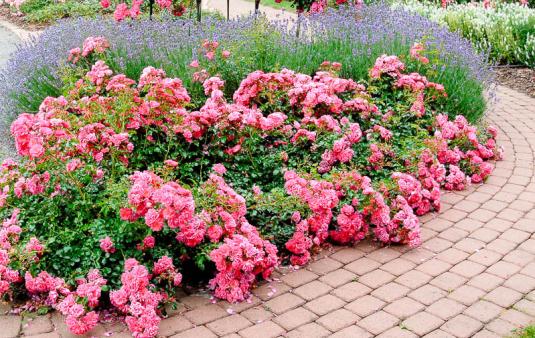
For some reason to currant(ribes) and gooseberries(Grossularia) we are accustomed to treat only as fruit bushes. However, it is worth looking at them from the other side. Any currant is decorative during the growing season: both in spring, during flowering, and in summer, during fruiting, and even without fruits.
All currants and gooseberries are very similar, but for undersized hedge quite suitable alpine currant(Ribes alpinum) - a compact and rather dense deciduous shrub up to 1.5 meters tall, a dioecious plant, female specimens are suitable for fruiting. True, the berries of the alpine currant are tasteless. Alpine currant is quite unpretentious, grows well in sunny areas, undemanding to soils, but when fertilizing, the shrub is much thicker, tolerates pruning well, does not need shelter.
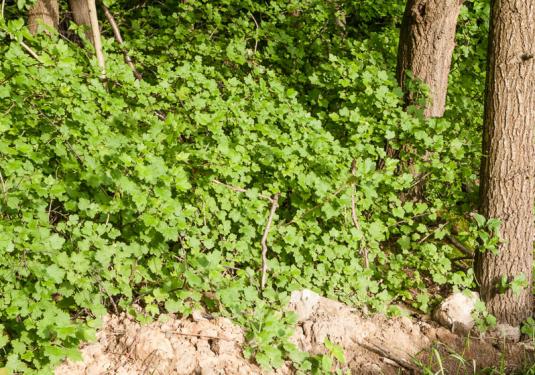
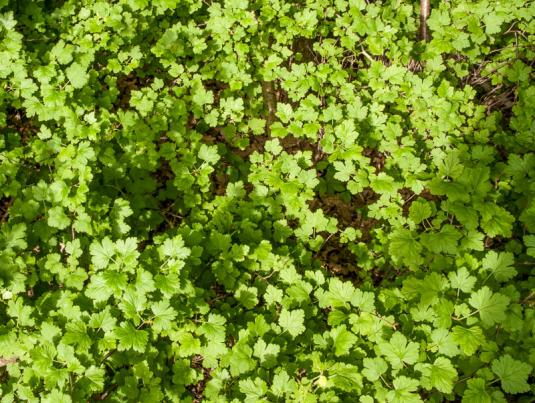
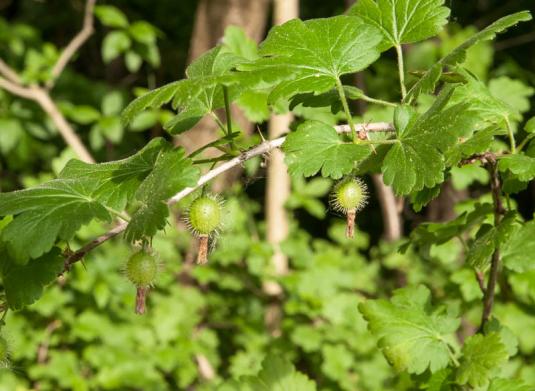
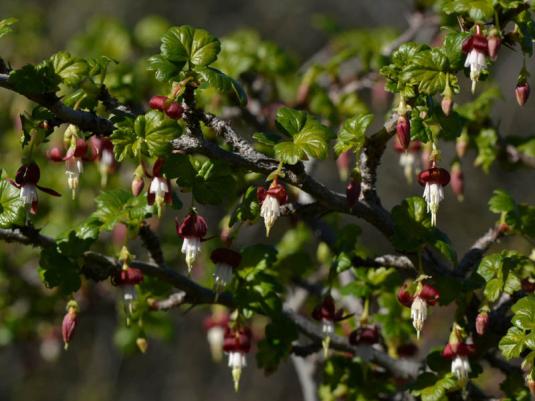
Japanese chaenomeles hedge is very decorative. Chaenomeles japanese(Chaenomeles japonica), or japonica- dense deciduous shrub up to 1 meter tall. Chaenomeles is very beautiful during flowering, when it is covered with marvelous red flowers. When tied, small rounded fruits with a pleasant lemon taste and smell are formed, from which jams and jams are cooked.
However, the Japanese genomeles needs protection from the northern winds. It is photophilous, grows better on fertile, well-drained soils. In winter, shoots can freeze slightly, but in spring they quickly recover. With strong thickening, thinning is required.
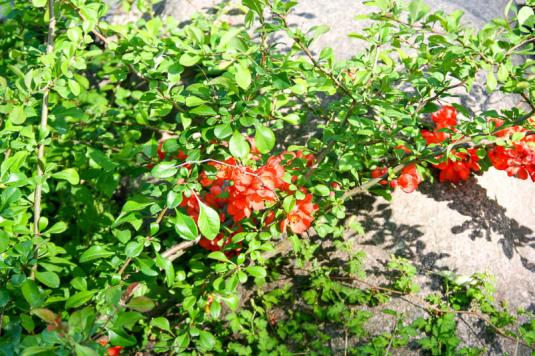
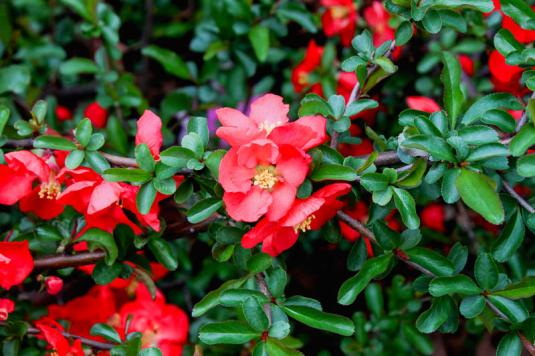
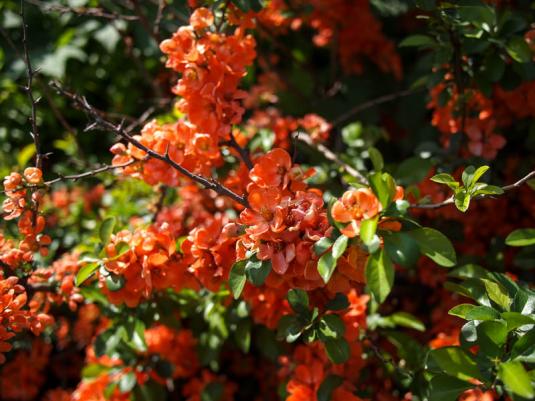


From this list, it is quite possible to choose plants that are ideal for your site, according to the requirements for maintenance conditions, fertility, acidity and soil moisture.
It is absolutely not necessary to go against nature and plant mahonia or rhododendron on poor dry soils, or on wet wetlands - almonds, gorse or boxwood. Only plants that are ideally suited to your conditions will grow quickly, become a real highlight of the garden, and most importantly, they will not require much care.
References: Konovalova T.Yu., Shevyreva N.A. Ornamental shrubs, 2004
Image source flickr.com: Leonora Enking (5), John Hickey, Ron Gay, Deborah Cowder, www.jardinerosenaccion.es, Janette Dollamore, Tracey Stout, Jodi, Stefano, peganum, Josef Lex (mission accomplished!), Matt Lavin, Mountain Partnership at FAO, per.aasen, Cheryl Moorehead, Andreas Balzer, Dietmut Teijgeman-Hansen, flemertown, dangle earrings, Maja Dumat (2), Daniela Ionesco, Diddlecome Dawcock, Paul Simpson, Eirien, Yasuki Fujinuma, Ron Wolf, Nobuhiro Suhara (2), Steve Garvie, Jens Schmidt, David Trevan, Ben Rushbrooke, Jan Sølve Borlaug, Marcel, stanze, jacqueline (Jackie) ramsey, naturgucker.de / enjoynature.net, Wulf Forrester-Barker, Nacho, Mark Watts, gartenknorze, Helge Vindenes. Ruschi. Carl Lewis, Martha B. Moss, L "herbier en photos, Stephanie, jlcummins - Washington State, matt hirt, Andrew Caird, photopoésie, Betsy, tesselaarusa (2), -eney- (3), Marc Kummel, Sirpa Tähkämö, Dan Davis, Kirill Ignatyev, FarOutFlora, Rainer Fritz
Each owner of a personal plot wants to add some zest to the landscape. This is easy to do with garden ornaments. You can also plant various ornamental shrubs to the envy of all neighbors: flowering, frost-resistant, low and beautiful. How to choose a shrub depending on the climate? How to make a garden bloom all summer? You can find answers to these questions in our article.
The Central European part of Russia is characterized by a temperate continental climate. The winter period in this strip is snowy with moderate frosts: from -8 to -12 degrees Celsius. Summer is characterized by sufficient precipitation and air temperature up to 21 degrees.
The choice of shrubs for these regions should be carried out based on weather and climatic conditions. It is worth noting that the variety of proposed options is quite large. Therefore, it is very problematic for many to decide on their preferences. Here are the main criteria to be followed:
- garden size;
- shrub life span.
Strengthening the color palette in a small country house
For a small garden, small compact shrubs are suitable, which can be planted in flowering zones, thereby placing accents in necessary places. These include:
- Everyone knows and very popular lilac. This is a luxurious and luxuriant flowering shrub, the hallmark of which is extreme hardiness. Lush lilac inflorescences delight the eye in late spring. And about the fragrant aroma of this shrub, many songs and poems have been composed.
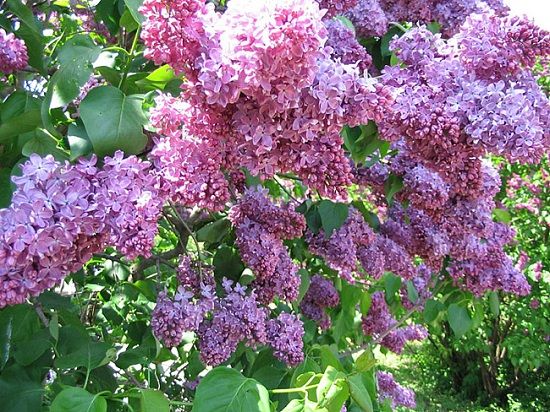
- The lush flowering of the garden in the first decade of July will be continued by the light-loving kolquitsia shrub. Its white and pink inflorescences are so close to each other that each branch resembles a separate bouquet. In height, an adult shrub reaches up to 3.5 m.

- Magnolia will add wealth and sophistication to a small backyard. This amazing plant has very beautiful and large inflorescences that begin the flowering period in early spring and fill the garden with a captivating heady aroma. Due to large leaves and bright fruits, the shrub remains decorative at any time of the year.
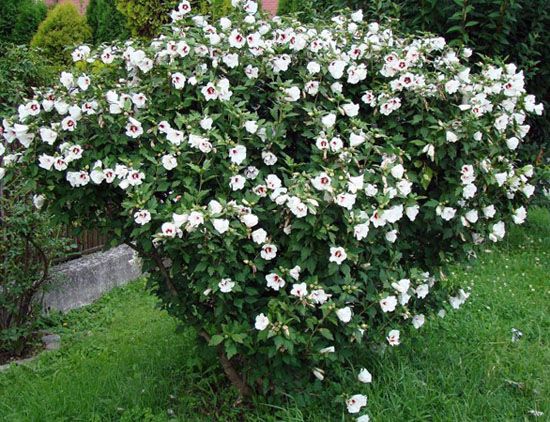
Little charms for a big garden
You can create a sense of celebration in a large garden with the help of such ornamental shrubs:
- Do hedge from flowers you can if you plant a spirea in the country. The plant reaches 2.5 m in height and looks very impressive in the spring, when the first delicate flowers appear on the shrub.
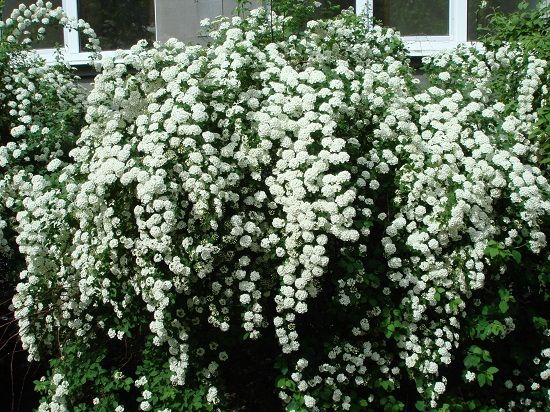
- AT summer time year, the barberry blooms, on the branches of which red clusters of berries will appear by autumn. The small flowers of the barberry resemble bells and come in a variety of colors. Barberry is a very unpretentious and drought-resistant plant.

- Hydrangea is rightfully considered the queen of a large personal plot. The bush of the plant does not exceed 3 meters in height. The first flowers appear already in mid-spring and remain on the branches until autumn. All inflorescences are collected in a kind of dome at the end of a branch, which adds a special attraction to the shrub.

Long-lived shrubs
Most shrubs have been growing on the site for decades. These include the already familiar to us lilac, barberry, hydrangea. However, the list does not end there.
Many choose such ornamental shrubs for summer cottages:
- The beauty of the spring garden will be Japanese quince. This is a rather unpretentious shrub 4-5 m in height. It tolerates drought and cold winters perfectly, and the older the plant, the less frost is dangerous for it. In mid-September, quince will treat its owners with medicinal fruits of a bright yellow color.

- The good old friend jasmine is absolutely not whimsical to watering shrub. It grows well in middle lane Russia and is very popular among gardeners. To make the plant bloom and smell fragrant, plant the jasmine in the light.
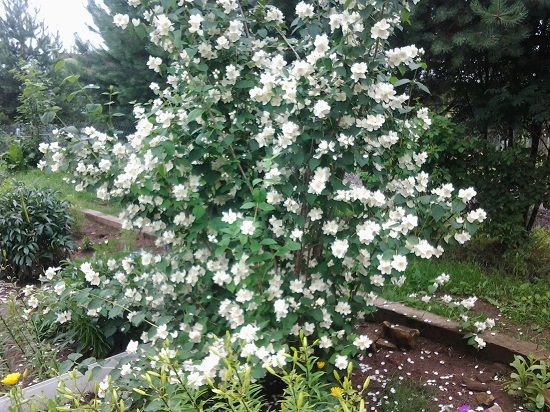
- But the garden hibiscus, or as it is also called the Syrian rose, does not like severe frosts. The shrub grows up to one and a half meters in height and blooms in the summer months. The plant is very fond of direct sunlight and looks good in the vicinity of roses.
Read also:
Winter-hardy shrubs that bloom all summer: a brief description
Shrubs that bloom throughout the summer attract the admiring glances of neighbors and passers-by. In order to preserve the life of the plant as long as possible, it is better to give preference to those that will be resistant to strong and windy winters. The following types deserve special attention:
- The cinquefoil shrub or Kuril tea is very winter-hardy and is able to grow even in permafrost conditions. A characteristic feature of the plant is its small size - up to one and a half meters in height. It has a long flowering period - from July to the end of August, and in early autumn, fruits ripen on the bush, which are widely used in making tea.

- The frost-resistant weigela looks very picturesque in the garden. A special feature of this ornamental shrub is the change of color depending on the time of year: in spring the flowers are pale pink, in late summer they are rich red. For the full development of the shrub, choose a well-lit area.
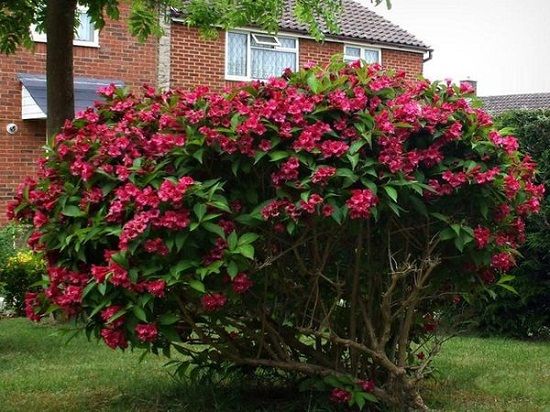
- It tolerates winter very delicate-looking snowberry shrub. Its flowers look like lilies of the valley and appear in early June. In the final flowering period, and this is September, whitish berries appear on the branches of the shrub, which will last all winter. However, despite its fertility, the berries of this plant are inedible, although they look very appetizing. In height, the snowberry does not exceed 2 meters. The shrub itself is unpretentious, the only condition good growth- a sufficient amount of light.
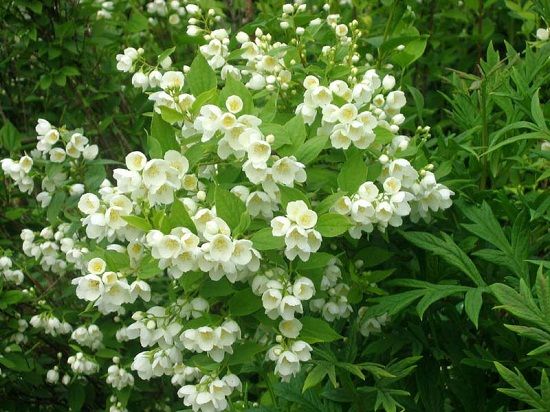
And these are only the most interesting of the representatives of frost-resistant shrubs. In total, there are about 50 species known today, which are widely used in landscape design and decoration. household plots in central Russia.
Read also:
If you decide to bring a special charm to the landscape of your garden or cottage, then pay close attention to the various shrubs. They can not only serve as decoration, but also be useful. Especially if you correctly plant the bushes on the sides of the footpath or along the open veranda.
Respect, only TODAY!
all cicava
Shrubs must be present in country design. It is good if the decorative effect in them is combined with useful properties, for example, tasty fruits. Shrubs valuable for their decorative effect are usually located in groups or separately. Good…
Kalina Buldenezh is a shrub with incredible beauty with large caps of snow-white flowers. The plant is one of the ornamental, and is sure to attract attention with its unusual appearance. However, to achieve lush flowering is possible only with ...
Every gardener dreams of shrubs blooming all summer long on his plot. It is possible to fulfill such a desire, it is enough to collect as much information as possible about suitable species and varieties. The list of flowering plants is large, you just have to choose for yourself ...
Robinia bears its name in honor of V. Robin. He brought this plant from America to Europe. All types of Robinia are grown as ornamental trees or shrubs. Description of Robinia There are about twenty species of deciduous trees and shrubs. At…
Today we will talk about a unique plant, which seems to be specially created by nature for decoration - about tamarix. Perhaps, it is hardly possible to indifferently pass by him during the flowering period - so he beckons the eye with his beauty and grace. Growing…
Buddleya David is a beautiful deciduous shrub that belongs to the Norichkov family. In the people, the plant may be called a flower of David or autumn lilac, sometimes a butterfly bush. These names appeared due to the fact that Buddleya ...
AT recent times Ornamental shrubs are becoming increasingly popular in garden design. Modern selection pleases gardeners with a huge variety of hybrid forms with intricate crowns and bright leaves.
They look beautiful and are easy to care for. The decorative effect is not inferior to flower beds, and the cost of their maintenance is much less. This attracts more and more fans. Moreover, many shrubs bloom. If you select species and varieties according to the timing of flowering, they will create a coloristic effect from early spring to late autumn. There are no such bushes that bloom in April and bloom all summer, but there are species that replace each other in seasonal decorativeness. Successfully selected specimens form a garden of continuous flowering.
Here is a list of popular types:
Shrub over 2 m. It is undemanding to growing conditions, but grows faster on rich soils. Prefers calcareous soils, but is content with neutral ones. Forsythia is photophilous, but withstands partial shade. Suffering from drafts. The main value is early flowering in April, yellow "stars" bloom when nothing is green in the garden. In summer, the shrub looks modest, but in autumn the leaves flare up with fireworks of yellow, orange, red colors.
Almost does not bloom in the shade, but is used for sheared hedges. Annual pruning with shortening of leaf shoots is desirable, otherwise flowering is completely suppressed after a few years. A popular propagation method is by bending branches to the ground. A shoot buried in autumn takes root until spring. It is better to plant and propagate forsythia in the fall.
Three-lobed almond - Louisiana three-lobed
A large shrub growing over 3 m, with a disorderly sprawling crown. In decorative design, the forms "Captivity" and "Kyiv" are popular. Almonds are distinguished by early spring flowering in early May. Terry flowers of pink, light red or raspberry color last 2-3 weeks. Most of the summer it looks unattractive, and in the fall it does not differ in showiness.
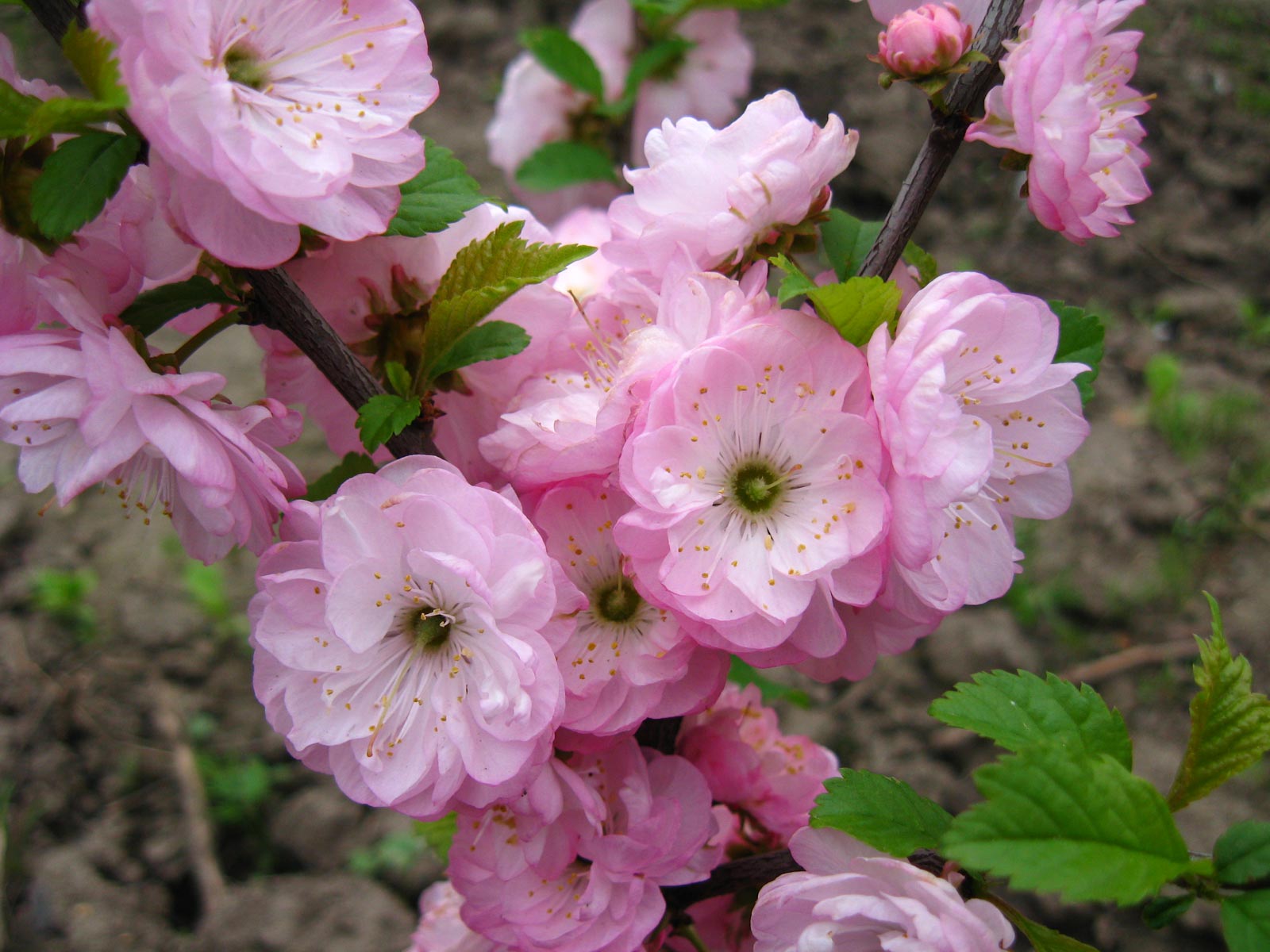
One of the qualities in favor of Louisiana is high winter hardiness. It prefers rich fertile soil, although it survives on any. It treats watering with restraint, even successfully tolerates a short-term drought. But the duration of flowering directly depends on moisture, the more water, the longer you can admire the beautiful "pink foam".
Chaenomeles - Japanese quince
Long-lived shrub good care reaches the age of 80. The average height is 1.5 m, it grows up to 3 m. The dense crown consists of prickly shoots. Scarlet-red flowers appear in May. Prefers rich soils, but tolerates any. Loves light, but tolerates partial shade. Differs in steady frost resistance.

In culture, varieties with different colors are popular:
- yellow in a pink border - "Papel";
- salmon-orange Gaillardi;
- pink - "Malardi"
The rose is called the queen of the garden, and the lilac is the queen of May. It is interesting to note that a huge number of varieties belong to the same species Common lilac, almost always propagated only by grafting. Root growth, most likely will not give the desired variety when flowering. As a result of selection, there were so many of them that botanists divided them into 8 groups according to the color of the flowers. The color range ranges from snow white to deep purple. It blooms in May, on average 2 - 3 weeks.
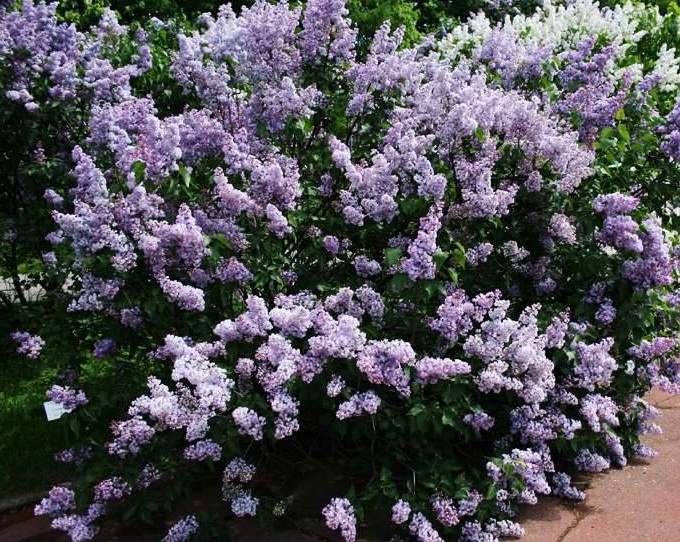
In care unpretentious. It is favorable to fertile soils of neutral reaction. Prefers comfortable, wind-protected places. Needs annual pruning. Gardeners often form it in the form of a tree.
Spiraea Van Gutta
This non-capricious beauty is popularly called the bride. In May, white flowers cover it with an even layer. At this time, the bush is visible from everywhere. This "outfit" lasts up to a month. At other times, it looks neat and compact, despite its considerable height - over 2 m. In a sunny place and well-drained soils, it feels better than in the shade. Extremely cold hardy.
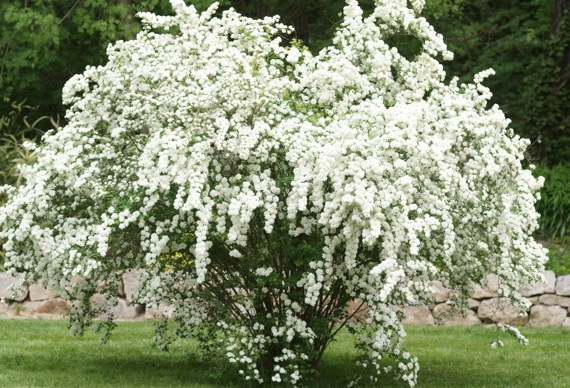
Use to form free-growing and sheared hedges. Among the numerous relatives, divided into 4 flowering groups, Spiraea Van - Gutta is the most famous and popular among gardeners.
Tall shrub 2.5 m blooms in late May, early June 2 - 3 weeks. White "stars" are collected in inflorescences 10 - 15 cm. Does not like the scorching sun, prefers partial shade. It is quite winter-hardy, in cold winters the shoots freeze to the ground, but in spring they recover from the root. Does not tolerate drafts, young plants are especially affected.
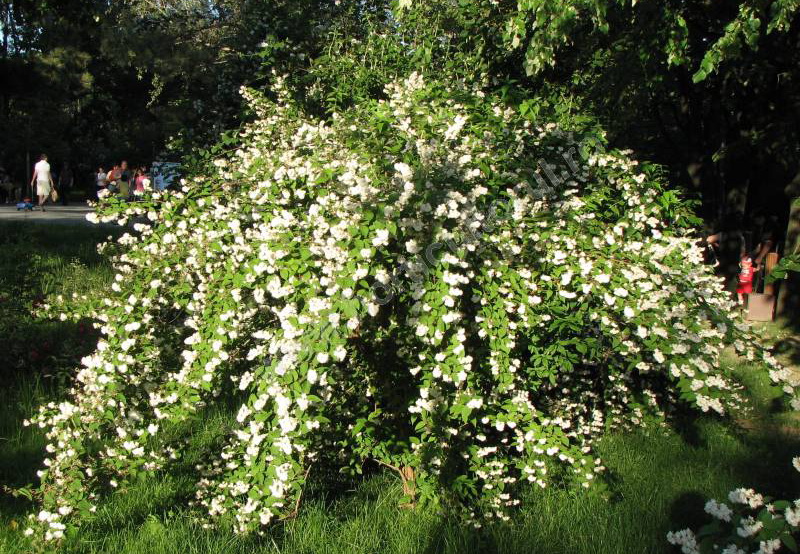
Breeding varieties are presented:
- Candidissima;
— Rjseo-plena;
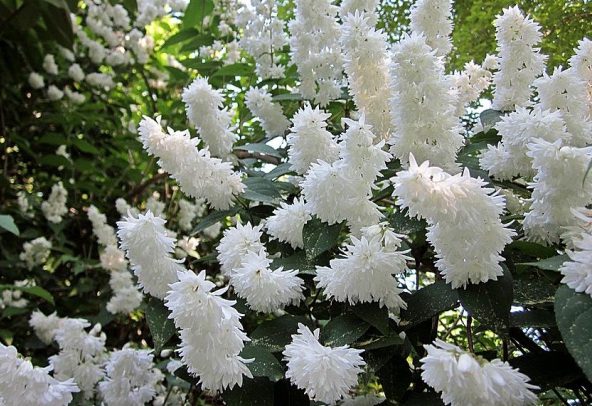
Spectacular decorative effect and rare unpretentiousness made Barberry a favorite of gardeners. Due to the speed of growth, compactness of the crown, flowering and ripening of edible fruits, it is considered an ideal plant. Breeders have bred many forms with different heights and leaf colors. If the species Barberry is not extremely picky about growing conditions, then the “colored” varieties require a lot of light, otherwise yellow, purple or speckled leaves turn green.
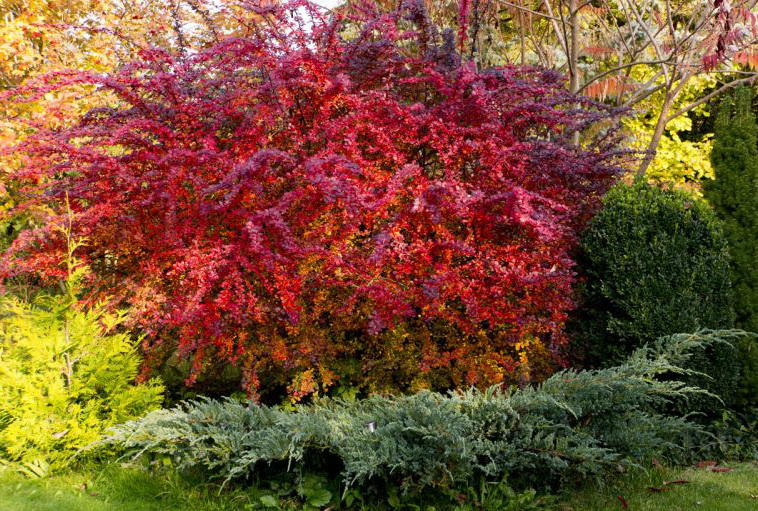
In late May, early June, spectacular bright yellow flowers appear on the bush, which last three to four weeks. By autumn, red berries ripen, which are used in cooking. In winter, they decorate the garden until they are pecked by birds.

In the people it is often called Jasmine for the deep perfumery aroma of flowers. Shrub 3 m high. Numerous shoots grow densely from the ground. For this reason, it needs annual thinning, which favorably affects the abundance of flowering in late May and early June.
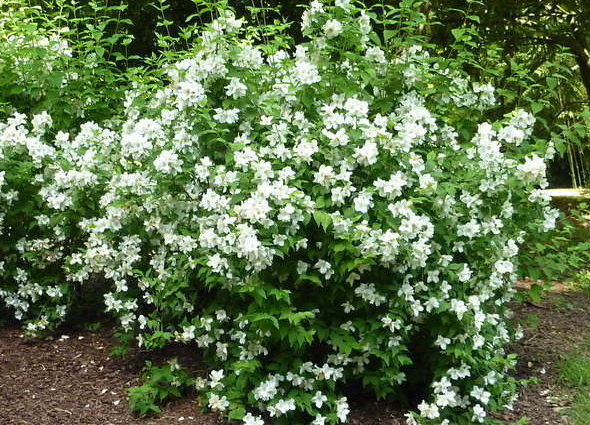
It is undemanding to conditions, grows well both in the sun and in the shade. Lack of light affects the quality and quantity of flowers.
It tolerates winter and frosts down to minus 25 0 well. If it still freezes, in spring young shoots grow up to 1.5 m and bloom in the same year.

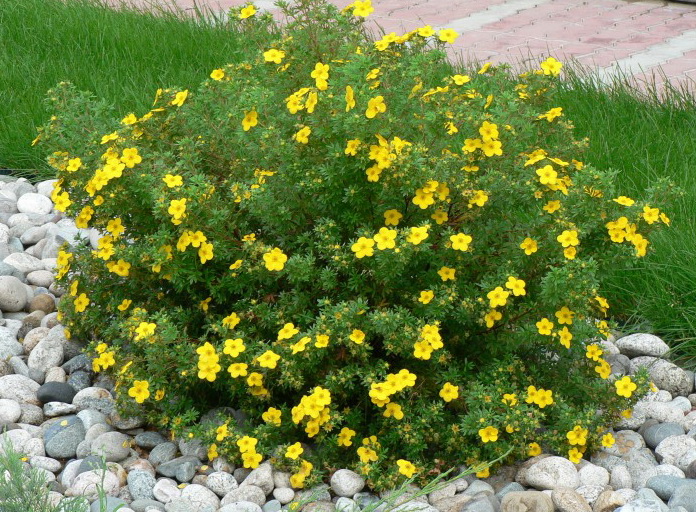
Potentilla got its name for the shape of the leaves, people say about it: "crow's feet". Valued for beautiful small dense leaves and long-term flowering. In sunny places, bright yellow flowers appear in June and change continuously until September. Almost never blooms in shade. It is used as a solitary plant and in hedges, it cuts well. It has many varieties of different colors, but they are inferior in the duration of flowering to the original species.
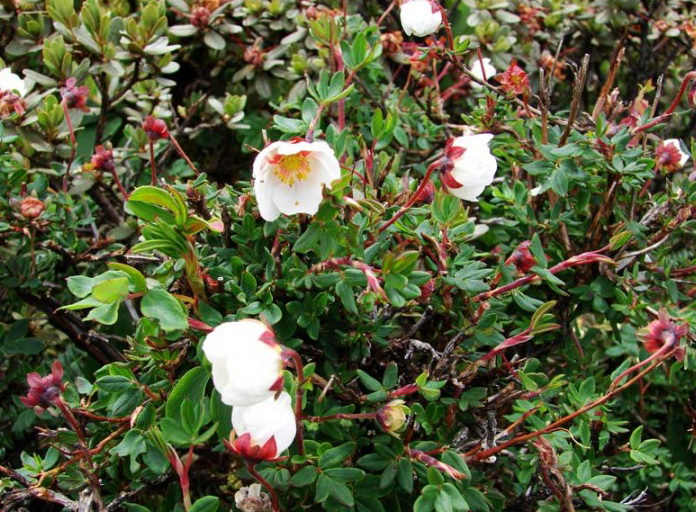
In care, it is not capricious, but without attention it runs wild, grows randomly and blooms worse.
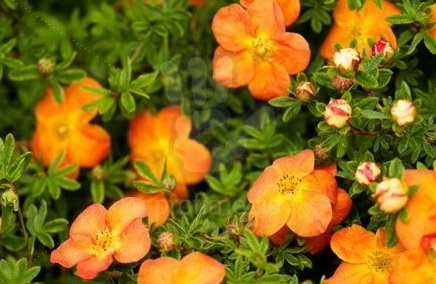
In dark, damp places it feels better than in the open, it does not tolerate drought. Winter-hardy and frost-resistant.
A shrub that blooms the very last in the garden - in August. The plant is thermophilic and often freezes over in winter, so in late autumn it is cut and spud like roses.
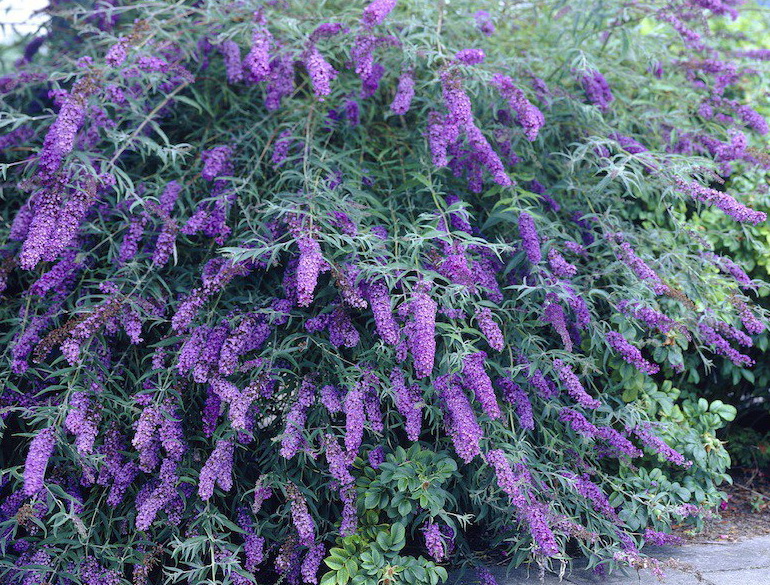
Pinkish-lilac flowers are collected in long brushes, for this quality it is called autumn lilac. Buddleia emits a sweet fragrance that attracts bees and butterflies. This bright tandem lasts a month and a half.
Popular varieties with different flower colors:
- Royal Red - with lilac-red;
- Alba - white;
- Orchid Beauty - pale lilac,
- Empire Blue - blue-violet;
— Black Knight - dark purple;
— Fascinating - pink,
— White Profusion - white-pink.
The necessary conditions:
- good lighting;
- a place protected from the wind;
- fertile soil;
- abundant watering. And Budleya will delight with flowers until late autumn.
This small assortment of hardy shrubs will fill the garden with flowers from April to October.
Each gardener tries to plant their garden as best as possible, but not every plant will adapt to low temperatures, so here is a list ornamental flowering frost-resistant low beautiful shrubs.
To begin with, a few words about the scope of the use of such plants. Firstly, this catalog will suit you if you decide to design a small garden or simply do not want to see shrubs that grow to a three-meter height. Secondly, with the help of low flowering shrubs you can plant entire strips, entire hedges. Most shrubs can be pruned if they start to grow too much. .
Note that many dwarf shrubs are special varieties of plants (two-meter white turf, Canadian dwarf turf). Therefore, when buying a bush for your garden, make sure that they are undersized. Thanks to low-growing varieties, your garden will look very representative, like an ordinary garden, because there will be the same number of separately growing bushes, and they do not take up much space.
Catalog of ornamental flowering frost-resistant low beautiful shrubs - 15 pieces with photo
Let's see 15 shrubs with photos and names that fit the following conditions: undersized, frost-resistant, beautiful.
|
Kuril tea or shrubby cinquefoil - decorative frost-resistant low and beautiful shrub, not afraid even of severe frosts of most of Russia. It blooms for two months - July and August, and in September the bush bears fruits from which tea is made. It will be interesting to you that Kuril tea lends itself well to shearing: the flowering of the shrub will even increase. And if you need a low bush, you can’t refuse a haircut.
|
|
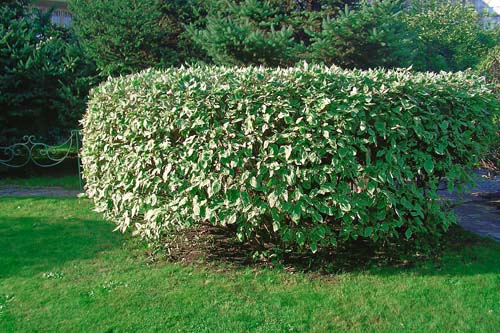 |
White Derain is a medium-sized shrub. Derain Canadian - creeping shrub, reaches a height of 30 cm. Canadian derain has amazing frost resistance, zone 2, can withstand temperatures up to -45 degrees. |
 |
Common lingonberry - decorative dwarf hardy beautiful shrub (30 cm wide and high), the plant is so popular that it is grown in nurseries. Frost resistance - zone 1, withstands frosts up to 50 degrees! |

|
FROMtenderberry- a frost-resistant beautiful low shrub that blooms all summer (June and July). Pleases passers-by with white flowers, and at the beginning of autumn, white inedible berries appear on the branches of the plant (causes irritation like on the skin, and indigestion, a lot side effects, warn the children), which, like beads, adorn the bush all winter. In warm autumn conditions, the snowberry can bloom a second time. Not very low shrub, reaches a height of two meters, like any bush, you can cut it. |
|
|
Barberry boxwood - decorative low blooming with yellow inflorescences, frost-resistant shrub. Frost resistance zone 5 (up to -30 degrees). The plant is beautiful low - usually 30 cm, it is formed up to a maximum of 50 cm. |
|
|
Low, blooming with small flowers ornamental shrub euonymus- a frost-resistant plant that can withstand frosts down to -25 degrees (zone 6). Height reaches 60 cm, girth 80 cm. |
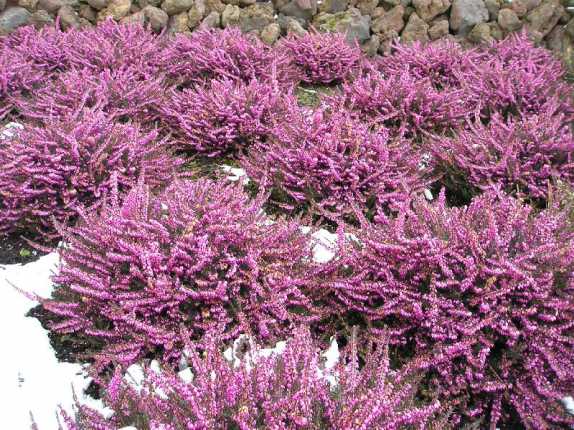 |
Herbal Erica - very graceful, undersized, frost-resistant (up to -25 degrees, zone 6) |
 |
Stefanandra notched leaf is a low, beautiful shrub for the 5th winter hardiness zone (up to -30 degrees). The height of the shrub is 50 cm, in girth it is significant up to 150 cm, spreading openwork. |
 |
Japanese spirea is a low shrub, 40 cm tall and 40 cm wide. 4 frost resistance zone, up to -35 degrees. Blooms in June, July; flowering time 45 days. |
 |
Dwarf decorative viburnum, varieties Nanum, grows up to 50 cm high. 4 zone, up to -35 degrees. Blooms in May-June, smells good |
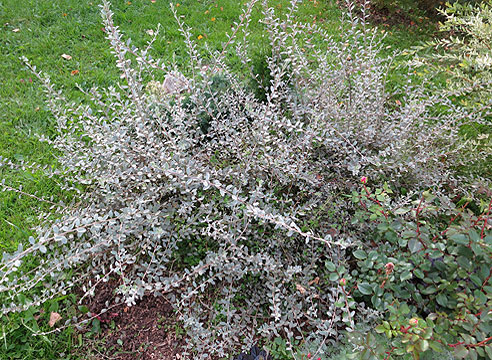 |
Creeping willow is a low beautiful shrub (height up to 50 cm, width up to 100 cm) with silvery leaves, it does not bloom, but its very appearance will form an advantageous landscape design. Shrub from the 5th zone, winters at temperatures of -30 degrees.
|
 |
Hydrangea - it is impossible to pass by this bright, luxuriantly flowering beautiful bush. The bush is distinguished by voluminous inflorescences in the shape of a ball. The variety of color palette delights, the color of the inflorescences depends on the acidity of the soil. With a high level of acidity, the inflorescences are brighter. Flowering time is August and September. Hydrangea can be safely planted in partial shade, it is not afraid of frost up to -20. This shrub does not grow well in limestone and dry soil. |
Planting garlic before winter is a responsible event, here you need to choose the right planting material, correctly determine the planting time, know the subtleties and rules, nuances and features. Let me start with such nuances. Garlic has two different forms: one is referred to as non-arrowing, the second is arrowing. What is an arrow? The simplest is the peduncle. The arrow is formed only by winter garlic, that is, the one that we sow in autumn.
Transplanting sooner or later is necessary for all indoor plants. But in the case of indoor large-sized, it is not carried out as long as possible, since this is not an easy task. And rarely, what adult plants need an annual transplant. In years when transplantation is not carried out, it is recommended to perform a mandatory procedure - a partial replacement of the soil. The topsoil is replaced both for hygiene purposes and to maintain the normal state of the substrate.
Winter pickled cucumbers, crunchy, jarred with garlic, onion and chili are another easy way to prepare savory vegetables for winter. There are many recipes for pickles and marinades, even a lot. This recipe has a twist that is intended for spicy lovers: add a pinch of cayenne pepper to the marinade, and a green chili pod to the vegetables. Such cucumbers, ladies forgive me, will appeal to the strong half of humanity - an amazing cold appetizer.
The vast majority of gardeners, especially summer residents, after the end of the berry picking season, forget about their shrubs until next spring and, at best, feed them after the snow melts with a handful of nitroammophos or weed them, removing the rapidly growing couch grass. This fate befell the black currant. Although outwardly the culture seems to be a healthy and strong shrub, it also requires care and attention. And especially in the autumn, when there is a long winter ahead.
Hydrangeas - shrubs are not only fashionable, but also irreplaceable. They are used both in urban landscaping and in private gardens, paying tribute to the bright foliage, pastel colors of the inflorescence caps and stable decorative effect. Most often, hydrangeas are planted in groups or singly, mixing with other bushes and trees. Meanwhile, perennials will also be able to keep these garden princesses company, with the help of which you can create colorful, stylish and expressive combinations.
Lentil cutlets with chanterelles is a delicious, original hot dish that can be served for dinner with a side dish of mashed potatoes and a thick white sauce. If you want to surprise your guests and family, cook these tender meatballs. You can replace chanterelles with champignons, because it is not every month that you will meet in the forest or on the market exactly “forest gold”. I cooked cutlets from Canadian green lentils, they are cooked in about half an hour. Regular lentils need to be soaked in advance.
In the current season, alas, there is no record apple harvest: the rainy and rather cool summer, which looked like a mixture of autumn and spring, interfered. But still, there is a harvest, it is tangible, and if we do not want the harvested apples to spoil in a couple of weeks, they must be properly stored. They say that with proper storage, an apple can lie for several years, retaining its varietal qualities and properties, but why should we wait so long to taste it?!
One of the most original types of indoor blehnum ferns is rightfully considered one of the most capricious. Its thermophilicity and humidity requirements have turned this relic plant into a real legend. Blekhnum, or derbyanka in the room - the fern is not for everyone, but it is surprisingly beautiful. Rather large sizes and remotely reminiscent of palm leaves, fronds will easily outshine any other decorative leafy plant in your interior.
Pancakes from zucchini with cheese and garlic - tasty dish worthy of a Sunday breakfast, especially in harvest season. Pancakes are a useful thing, you can’t prepare them for the future, but you can completely eliminate part of the crop with benefit. For a family of three, one medium-sized vegetable weighing up to 1 kilogram minus cleaning is used. From this amount, you get an impressive appetizing slide of pancakes, which will famously leave with sour cream while watching the Sunday morning show.
Mixed ridges and narrow long flower beds along the paths and walls are in fashion today. And although this is the most colorful, it is not the only design option for colorful plant frames of various functional purposes. Sometimes it is not advisable to break even the smallest ridge about half a meter wide; the design requires greater rigor and “subtlety” of the plant line. A narrow and neat border of one plant is the most obvious, but the only way out.
Now is the very beginning of autumn, the whole crop has not even been harvested from the site yet. But you may not believe that in order to ensure the harvest of the next season, the vacated soil, for future beds, is already time to start preparing. And this is not a joke at all: you need to prepare this soil correctly so as not to be disappointed in the next year's harvest. How to prepare the beds, how to properly dig and fertilize the most common vegetable crops right now, we will tell you today.
Pickled cucumbers in circles with citric acid are garnish cucumbers, the cooking principle of which I somehow spied on in one TV show. They showed a large factory where cucumbers are pickled for hamburgers. These are really excellent side dishes, which are indispensable in cases of emergency, when there is no time to cook dinner, but you need to feed your family. On a plate to mashed potatoes and sausages put a slide of cucumbers with onions - and it's already delicious!
Proper nutrition for indoor plants- one of the factors of their normal development. Fertilizers are often misunderstood as just a flowering or growth aid, but their significance is much more important. Plants obtain substances from the soil and air. But in a limited amount of substrate, they depend on whether top dressing is carried out correctly and what fertilizers are used. For pets, both macro- and microelements are equally important.
Homemade tomato juice, in the recipe of which a blender is used, is simple, tasty and within the power of any housewife. I don't use a juicer. Frankly, it's just a pity for the place in the kitchen. This kitchen gadget you only need a couple of months a year if you are not a fan of freshly squeezed drinks, and it will take a shelf in the locker firmly and for a long time. An ordinary blender, and in the old days - a simple meat grinder and a sieve, solve the problem of making tomato juice at home.
Potash fertilizers, along with phosphorus and nitrogen fertilizers, are very important for plants, since potassium is a significant element for them, one of the three pillars on which the entire life potential of any organism rests, so the application of potash fertilizers should by no means be ignored, especially since there are many fertilizers that contain potassium, and you can choose the most suitable for the type of soil of your site and the plants growing on it.
Colorful symbols of summer, quivering, delicate, and at the same time so hardy, decorative poppies, leave no one indifferent. The inimitable colors and details of the structure of these amazing flowers are an invariable decoration of any garden in the summer. But the cultivation of decorative poppies is not a completely standard task, although not a difficult one. Poppies are propagated by seeds, and the choice of methods and methods of sowing allows everyone to find their own ideal option.

